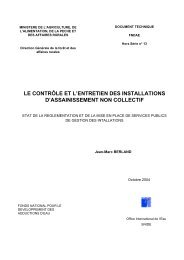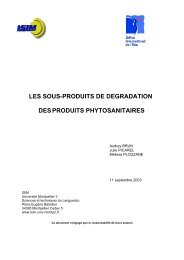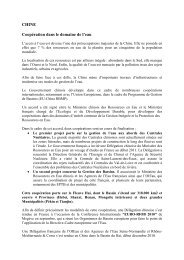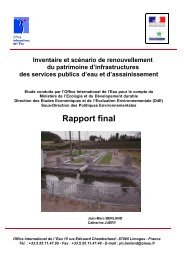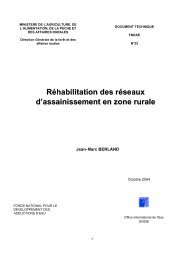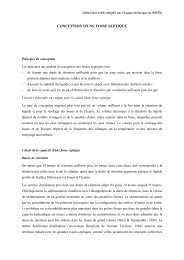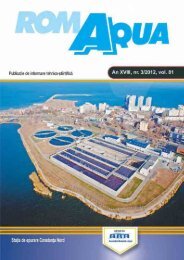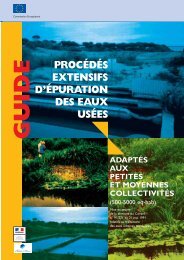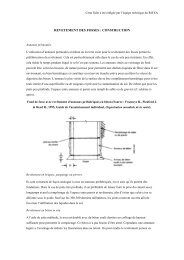Concept note
Concept note
Concept note
You also want an ePaper? Increase the reach of your titles
YUMPU automatically turns print PDFs into web optimized ePapers that Google loves.
forest‐ dependent communities, forests also protect and stabilize watersheds and<br />
soils in addition to maintaining land productivity and reversing land degradation.<br />
Climate change is already impacting Africa’s water resources through recurring<br />
droughts and floods. The increasing drying of some regions contributes to the arid<br />
land area that currently covers 60% of total land in Africa. Droughts are Africa’s<br />
principle natural disasters with over 30% of the population exposed to this<br />
phenomenon. The intermittent floods that affect low lying areas have severe<br />
impacts on the livelihoods of the communities.<br />
Climate change modeling predicts that approximately 20‐30% of the plant and<br />
animal species assessed thus far are likely to be at an increased risk of extinction if<br />
average global temperature increase exceeds 1.5‐2.5 o C (Forests for People, 2011).<br />
The disturbances, expected as a result of increased climate variability and change,<br />
are likely to exceed the normal ranges of variation thus exacerbating tree mortality,<br />
destruction of undergrowth and soil degradation. Other impacts such as the<br />
frequency and intensity of disease outbreaks, wildfires and risks associated with<br />
extreme events will also be exacerbated. The decreased ecosystem services in terms<br />
of water cycle regulation, soil protection and biodiversity conservation will imply<br />
increased social and environmental vulnerability particularly given the natural<br />
resources dependency and poverty levels in Africa. These impacts will be<br />
accentuated in the transboundary forests, which cover approximately 21% of the<br />
African landscape<br />
The increasing water demands in the transboundary rivers and lakes due to<br />
increasing populations, settlement patterns and partly fueled by the recent so‐called<br />
‘land grab’ also poses risks for loss of biodiversity and diminished ecosystem<br />
services. Transboundary forest parks are witnessing increasing deforestation and<br />
biodiversity losses. The destruction of mangroves is threatening the sustainable<br />
livelihoods of millions of riverine communities. The recent droughts experienced in<br />
the Horn of Africa and the Sahel also attest to the threat on livelihoods presented by<br />
climatic events and the reduced ability to cope with consecutive dry years as a result<br />
of reduced recovery time between the events.<br />
The existing challenges to the management of transboundary natural resources will<br />
undoubtedly be exacerbated by climate change. The variability in river flows, erratic<br />
precipitation levels, increasing temperatures and sea level rise will impact the<br />
sustainable use of these resources. Africa has a low adaptive capacity to climate<br />
change as a result of relatively high poverty rates, a high dependence on natural<br />
resources for economic stability and a deteriorating natural asset base. Given the<br />
low adaptive capacity of Africa, the new and additional risks as a result of increased<br />
climate variability and change are severe challenges for poverty eradication and<br />
overall economic growth.<br />
Significant resources are required to meet some of the challenges presented by a<br />
changing climate and pilot innovative approaches to joint and shared management<br />
of the vital water and forest resources. Such support will reduce the risks to the



